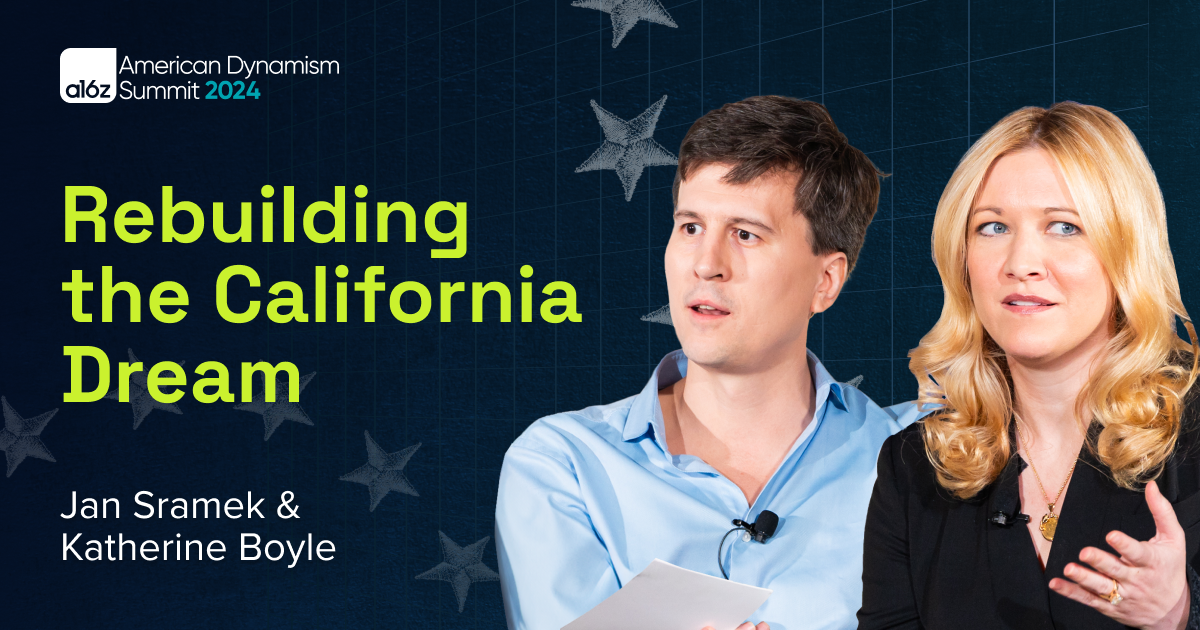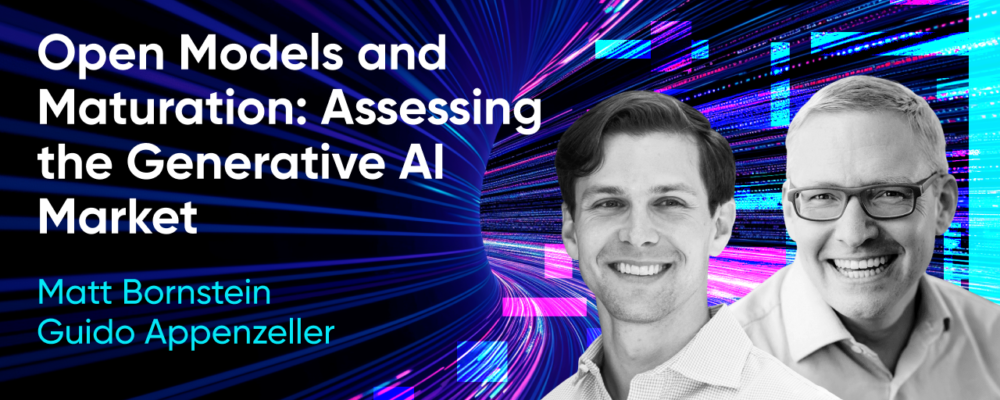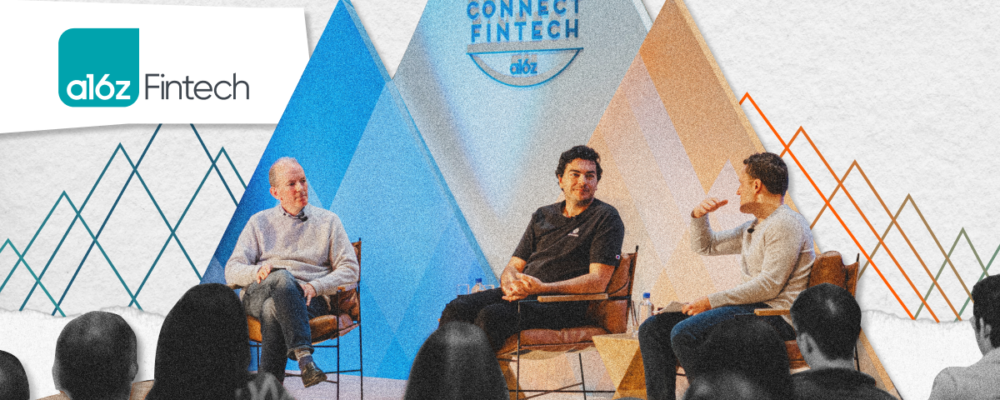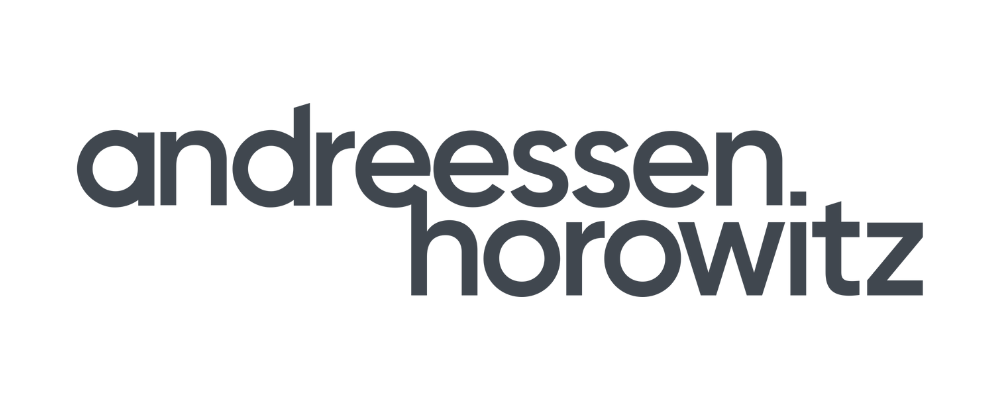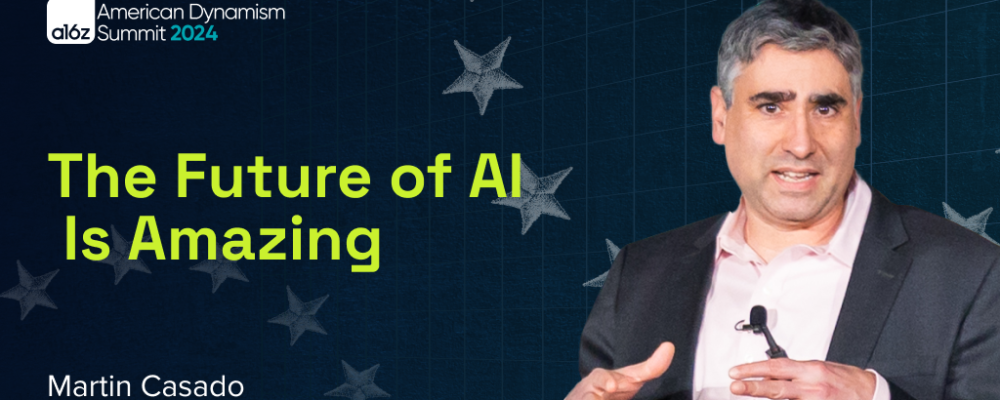California has long been ground zero for the new: new technologies, new frontiers, new arts and culture. In this session from the a16z American Dynamism Summit, moderated by a16z General Partner Katherine Boyle, California Forever CEO Jan Sramek discusses building an ambitious new city between San Francisco and Sacramento, why he firmly believes California’s best days are still ahead, and what he and his team are doing to realize that vision.
Here is a transcript of their conversation:
Katherine Boyle: Thanks for being here, Jan. I am so excited for this conversation. Many have probably read a lot about California Forever. And we’re going to get into the specifics of it. A city between Sacramento and San Francisco, 60,000 acres. But I want to start with you, because you actually have a very fascinating story.
You grew up far away from California in a small working-class town in the Czech Republic. And I want to understand what was it in your childhood, growing up, that led you to say, “I want to move to America and build a city?”
Jan Sramek: It’s great to be here. Thank you. And it’s great to get to tell the story. We’ve been working on this for seven years quietly, and so, it’s nice to be able to tell it.
I was born in 1987 in the Czech Republic. The Velvet Revolution happened in ‘89, the Berlin Wall came down in 1990, the Soviet Empire fell in ‘91, and so it was a very special time. And I think there were two influences. From a cultural perspective, I grew up on a diet of Hollywood culture and movies and TV shows.
And the ‘90s was an incredibly optimistic time in America. I think it was probably the most optimistic time in a long time in America. And I kind of soaked it all in. And I think that there is something about the culture that you consume during your teenage years in particular, that just gets buried in your brain. And we know that about music, and there’s kind of other things where that happens.
And so, to me, America was this place of idealism and opportunity, and California was this deeply optimistic place. And so, it was amazing after, I don’t know, 17 years later to be able to come here.
And, partially, it also drives how I think about some of the negativity that we’ve seen in California and the Bay Area about our inability to build things or our inability to solve some of the challenges where I still have that vision that I had 20 years ago. And so, it makes me upset and it makes me want to work on building it and making it better.
Katherine: Yeah. And we back a lot of immigrant founders, usually building companies, not cities. So, it’s extraordinary that you’re biting off an even bigger project. But we’ve alluded to it, California Forever, many have probably read about it. What exactly is California Forever in your words? And why are you building it now?
Jan: California Forever is an attempt to make sure that the Bay Area remains the center of innovation and prosperity that it’s been for the last 50 years. And we’re doing that by building a new city, the first new major city in the Bay Area that has been proposed or built in the last probably 50 years.
And so, we’re proposing to do that halfway between San Francisco and Sacramento, in a place called Solano County on the California Delta. And we’ve purchased about 60,000 acres in that area. We’re proposing to build a dynamic walkable community on a portion of the property, and then surrounded with open space and renewable energy, both wind and solar.
Why am I working on it now? I think a lot of it… some of it goes back to how I got to the Bay about 10 years ago. So, I got to the Bay 10 years ago and, you mentioned before, I grew up in a very blue-collar family in the Czech Republic, in a very rural part of the Czech Republic.
And when I say blue collar, I mean, my grandmother built the house that I grew up in with her bare hands. She did the masonry work, she did the roof beams, she did the plumbing work, she painted the walls.
And my dad was a car mechanic who built some of the early radio communications infrastructure in the Czech Republic. And so, he built the radio towers, and when I go back to see my parents now and I make a phone call on my cell phone, the signal still goes through the tower that my dad built in the area, which is a 1,200-foot structure that they finished building in the ‘70s or in the ‘80s. And they finished the building in December in like minus 30-degree temperatures, there’s wind kind of swaying the whole structure.
And so, I think that growing up there gave me a deep appreciation for the value of skilled crafts and skilled labor. And the fact that the world around us is built by us, it’s not something that we just accept.
And the contrast to me with coming to the Bay is that, I got to the Bay about 10 years ago, and I think that this combination of capital and creativity and culture and talent that exists in the Bay Area and has for the last 50 years, I think once you’ve lived there for a while, or if you’re born there, it’s easy to forget how just special and rare that is.
I’ve since then started to think that, I think what’s happened in the Bay Area has happened maybe seven times in the history of the modern world, at least in the West. I think it happened in Florence and Paris and London and New York and Chicago and maybe LA, and then it happened in the Bay Area.
And when I moved there, I loved it for all of the reasons that I just named and for the reasons that everyone loves it, and the cultural openness, and the beauty of the place. But it was a time when housing costs were beginning to escalate in the Bay Area in a crazy way. And I think what people began to realize at the time is that the Bay Area was possibly on the verge of becoming the greatest squandering of economic opportunity in the history of mankind. And I don’t say that lightly.
But we had the situation where we had a innovation engine that was spitting out these wonderful new products and services that made life better for Americans and for everyone around the world. And we were creating good paying jobs that everyone around the world was dreaming of and trying to attract, and all we had to do in the Bay was just build more homes, something that we’ve known for 10,000 years how to do.
And because we didn’t do that, even the communities in the Bay Area were beginning to completely break in terms of social fabric. This is the time when you had people throwing rocks at Google buses.
Because we didn’t build enough housing, we had created a zero-sum tournament where people were forced to fight with each other over the same stock of housing in the Bay Area. And so, instead of people celebrating that we had new employers and new jobs coming to the Bay, the communities were fighting over it, which is insane… That’s insane. Like, the whole world is trying to be you and you’re killing the ecosystem.
And you could see that in the numbers. I mean, if I told you that we have an area in the country that’s producing all of this innovation and high-paying jobs, would you expect people to be moving in or to be moving out? You’d expect people to be moving in, right? Because it’s creating opportunities, and that’s what happened for 60 years in California. It was the place that people from the rest of the country moved to, to realize the Californian dream.
And for the last 10 years, people have been moving out of California. More Americans move out of California every year than move in, and it’s not because they don’t want to be there, it’s because we’ve made it impossible to live there.
And even at a national level, there’s now a body of well-established economic research that basically says that our inability to build enough housing in the Bay Area and in New York and a couple of other places is reducing the GDP across America, not just in those areas, by significant numbers.
There was a famous paper in, I think, 2015 that Hsieh and Enrico Moretti out of Berkeley published, where they argued quite convincingly that if we built enough housing in the Bay, in New York, and a couple of other places, American GDP would be higher by 14 percent or more. Not in those areas, across America.
So, American GDP is, what? Twenty-seven trillion dollars now? And so, 14 percent of that is 4 trillion dollars of economic output every year, not one-off.
Katherine: So it’s a housing question, but when you’re trying to get people to move to a new city, you also have to think about the other part of the equation, which is jobs, as you mentioned. What is your pitch to employers to tell them to come to Solano County?
Jan: So, we have a lot of employers in the room, I think, in the Bay Area and in New York and DC. How many people feel like they need to pay their employees increasingly more and more and more because their employees can’t afford to live in the cities that they want to live in? Probably a lot of you.
How many of you are struggling because you can’t get your employees to come to the office every day? Because your employees have a commute that’s 45 minutes or, in some cases, one-and-a-half hours, and they just don’t want to spend that amount of time in traffic every day. So, even though when you tell them that they should come to the office, they fight and they don’t want to because they want to see their kids and they want to have breakfast with their kids, they want to have dinner with their kids.
And so, our pitch is, imagine that you had a place like West Village in New York or Georgetown in DC, or Noe Valley or the Marina in San Francisco. Medium density, row houses, backyards, traditional American urbanism, local shopping streets where you can walk to.
Then, imagine that we improved the transportation system by creating super blocks where cars inside those super blocks can only go about 10 miles an hour. We created biking and public transport infrastructure to use with that, meaning your kids can actually play in the streets, meaning your kids can actually walk to school alone and you don’t have to be chauffeur your whole life like a crazy person.
And then imagine that we build that in a place that is 25 minutes to Napa Valley, and that is an hour and a half away from Tahoe. And so, it’s a lot closer to those places that everyone in the Bay Area loves than Palo Alto or Cupertino or San Francisco or Oakland. And then imagine that the place is still an hour and a half away from your headquarters or office in San Francisco or Palo Alto or Menlo Park or whatever.
And so, if your team members between the two offices want to go and see each other, you don’t have to do Uber, TSA, airport, plane, delayed plane, airport, Uber, get to the office in Austin or Denver or wherever it is, but you can actually get in a car and in an hour and a half or in an hour, you can be there.
And then imagine that it was a city for up to 400,000 people that was entitled and approved at once. And so, you knew that for the next 30 years, if this office is going to work and you’ll be able to hire talent there, there’ll be enough space for you to grow in for the next 30 years. There’ll be enough office and there’ll be enough homes for your employees, whether they want to rent them or whether they want to buy them.
And then imagine that instead of paying 4 or 5 million dollars for a mediocre home in Palo Alto or San Francisco, your employees would be able to buy a nice house for a million dollars.
Katherine: Yeah, I think that’s where everyone says, “Sign me up.” But another unique facet of this project, actually, that I think a lot of people in this room will be very interested in is that it’s located very close to Travis Air Force Base. And the area is home to many veterans. So, how do you envision the interaction between this new city and the veteran community that’s populous there?
Jan: We think that Solano County has the opportunity to become…go to the roots of what Silicon Valley used to be. And so, Silicon Valley started with defense, we all know this. I learned the other day that between 1950 and 1980, the largest employer in Silicon Valley was Lockheed Martin.
And so, that’s not that far back. But then we lost the defense business because land cost became too high, there wasn’t enough land for manufacturing, and it became too expensive to do, and then there were cultural issues with the fights between the tech sector and the defense industry. And we think that, particularly with American Dynamism and this revival in interest in investing in defense innovation, there’s a real opportunity to bring some of that back to Northern California.
And it’s hard to do that in the core Bay Area for all of the reasons that we discussed. But in Solano County, there’s an opportunity where there is an existing large labor force. Travis is there, Mare Island used to be there, which was a naval base. And so, there’s a lot of cultural heritage and history of that.
And so, we think that Solano County can become the foundry of American defense innovation for the next 50 years. And I think that, there was a lot of talk today about our adversaries and some of the challenges with that, and I think… There were two things that I think would have given our adversaries hope over the last 15 years, if you want, in what’s going to slow down the pace of innovation in America.
Number one, it was the fact that we were strangling the Bay Area innovation ecosystem by just not providing enough housing, so we couldn’t create a critical mass. We couldn’t innovate as quickly as we could otherwise. And then the second was this period of, I would say, limited engagement between the defense community and at least some of the venture firms in the Valley and how that worked.
And I think our project has an opportunity to be a nightmare for our enemies where, it is an opportunity for the leading venture capital investment funds and individuals in the valley to come together with the military in a location that can accommodate growth for the next 30 years.
And so, I think when people look back in 2050, they might say that this was one of the most interesting and lasting and impactful partnerships between the government and the military and Silicon Valley in the country.
Katherine: I want to ask: building a new city, we’ve done it many times in America, yet there’s a lot of skepticism around building a new city today. Why do you think that is?
Jan: It’s a good question. I think it’s an idea that’s fell out of fashion and because of it, people don’t quite know how to think about it.
But it is interesting. It’s completely acceptable in California, and actually in most of the country today, to say that you’re working on inventing artificial intelligence. But when you say that because homes in the bay cost 5 million dollars and no everyday person can afford to live there, you want to take a bunch of non-prime farmland that isn’t ecologically sensitive and build some homes there so people can afford to live in the Bay Area, that’s somehow controversial. It’s okay to be building artificial intelligence and it’s controversial to be building a new city, it just doesn’t make any sense.
Katherine: So, assuming your initiative called the East Solano Homes Jobs and Clean Energy Initiative passes in November, what’s the time frame for breaking ground and actually completing the project?
Jan: Our target is to break ground in 2027 — that is ambitious by California standards. A couple of things have to happen for that to be the case. But we’re pretty optimistic that we will be able to do that. In terms of completing it, it’s a multi-decade project, and that we’ve sized it, we are approving it all at once so that people have the visibility, so that employers have the visibility that this is going to be here.
And so, I certainly hope to be working on it in 20 or 30 years. Someone told me if you’re trying to start a new city, it helps to start young, and so I was 29 when we started, so, we have a little bit of time.
Katherine: Yeah. And speaking of being young, you know, if you look at the trajectory 50 years from now, say, what’s the dream for this new city? What do you hope it looks like? What does it look like when it’s fully developed?
Jan: What it looks like, it should look like a bustling, dynamic community… Something that actually… would resemble some of these most beloved neighborhoods in America that we have today, some of them I already mentioned, and we have more.
If I ask people in the room to name your favorite neighborhood in America, the odds are you would name a place that was built in the 1800s or early 1900s. I think Tyler Cohen is speaking later on today, I think he’s been asking some of his guests, “What’s your favorite neighborhood? And why can’t we build amazing places anymore?”
And we want to rediscover the art of building great cities and neighborhoods. And that will be one of the contributions that we would make, which is, rediscover how we can do that so that other cities can hopefully learn from that.
We will have hopefully created a place that makes life much better for people in Solano County, the ones there right now and the ones who move in. It’s a county where there’s no major private sector employers in the county, and so, way too many of the residents commute an hour and a half, two hours every day for work, which means they never see their kids, and we can bring that economic engine.
And then, lastly, I think it’s an opportunity to make sure that the Bay Area remains the center of innovation and prosperity that it has been for the last 70 years.
I would say, it’s fair to say that for the last 70 years, the modern world was invented in, a lot of it was invented in the Bay Area and in California. And I think that’s been amazing for the country overall, and it’s not clear that that’s going to be the case for the next 70 years.
And I think we would all much rather that the world is built and invented in America with American values than somewhere overseas. And I think that isn’t going to happen if we don’t create the room for us to innovate, particularly now that the Valley, to the point of American dynamism, is doing so much more in advanced manufacturing, and defense, and agriculture technologies, and all of these sectors attached to the real world.
And you can’t invent them or they are very difficult to invent in Palo Alto when a home costs 5 million and you can’t get any office space to build a factory or something like that, or an R&D facility. And so, hopefully we can help make sure that the future is what it should be.
Katherine: Thank you for reigniting the California dream.
Jan: Thank you.
“Andreessen Horowitz is a private American venture capital firm, founded in 2009 by Marc Andreessen and Ben Horowitz. The company is headquartered in Menlo Park, California. As of April 2023, Andreessen Horowitz ranks first on the list of venture capital firms by AUM.”
Please visit the firm link to site


